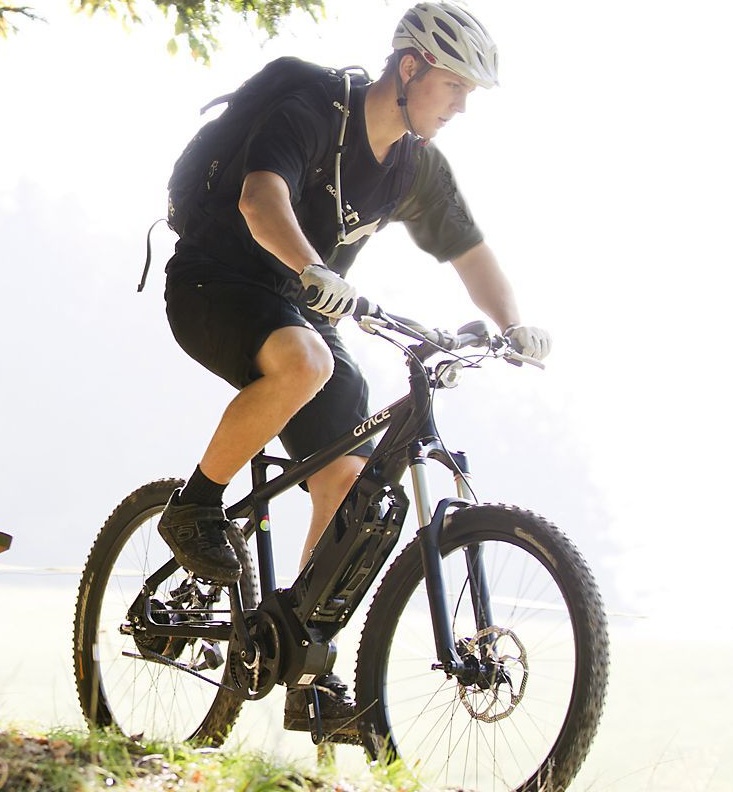Motors
Modern pedelecs (electric bicycles) run on brushless electric motors that draw power from a battery contained in the bicycle frame or on the bicycle rack. They are available in three configurations; the two currently most popular are front or rear hub motors. The third kind is the crank drive or centre motor.
Front and rear hub motors work directly on the wheel and are probably the most efficient at driving the bike forward in perfect conditions. There are no mechanical parts between the motor and the wheel and the motor works independently of the bike’s transmission or gears.
Front drive motors are usually smaller and less powerful than rear, and tend to be used on folding bikes or bikes that use hub gears. Rear drive motors are often larger and produce more torque, to enable better hill climbing and load carrying capabilities. These motors are simple, easily maintained and are most widely used.
The center or crank drive motor is very popular in Europe where throttles are not allowed. The motor works on the crank axle, augmenting the cyclist’s efforts. Crank motors work through the bicycle’s transmission system (gears) and are more efficient when using the gears to climb hills, although they put more strain on the chain, drive system and gears.
Sensors
All electric bikes have a sensor; the sensor is an electronic switch that turns the electric motor on when the bike is pedaled. There are two types of sensor, the torque sensor and speed sensor, sometimes referred to as a cadence sensor.
A speed sensor is a simply switch that recognises when the pedals are being turned. A magnetic disc is mounted on the crank axle and when one of the magnets pass by the sensor a pulse is sent to the controller and the motor is activated. The amount of power delivered to the motor is controlled by either the setting on the handle bar controls or by the throttle if fitted.
Many prefer the combination of throttle and speed sensor as it allows the rider to choose exactly the amount of power needed at any time, quickly and easily.
A torque sensor is a little more complicated, it measures the amount of effort the rider is putting onto either pedal, then through the controller and motor multiplies the effort by a factor pre set on the handle bar display; the higher the setting, the higher the multiplication factor. Some torque sensors only operate the motor whilst pressure is being put on the pedals causing a surge sensation even when pedaling continuously, however on most electric bikes this is hardly noticeable.


